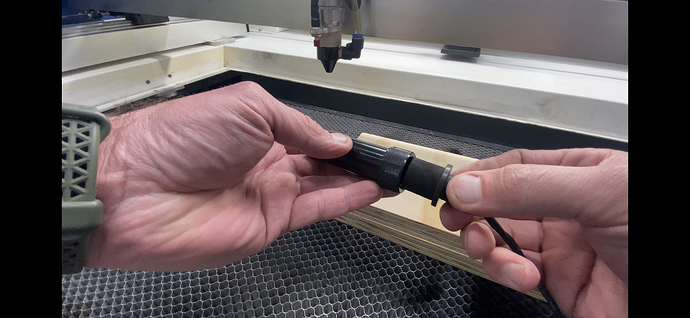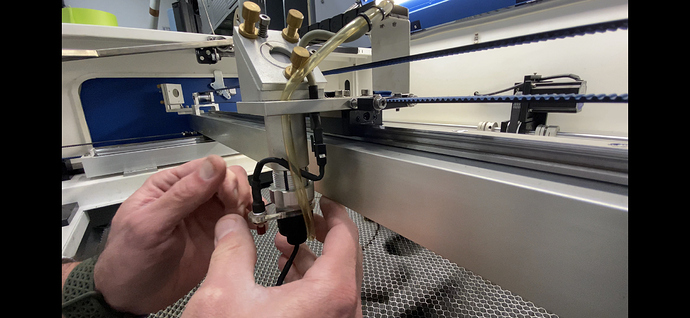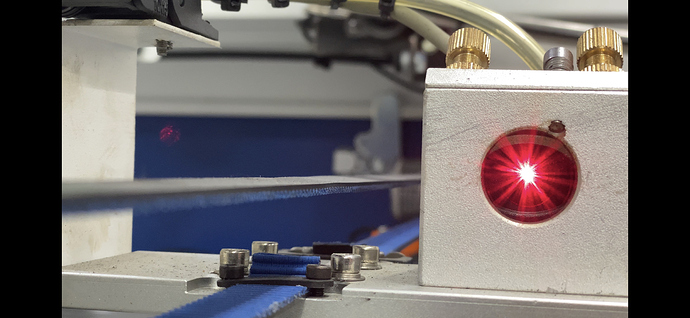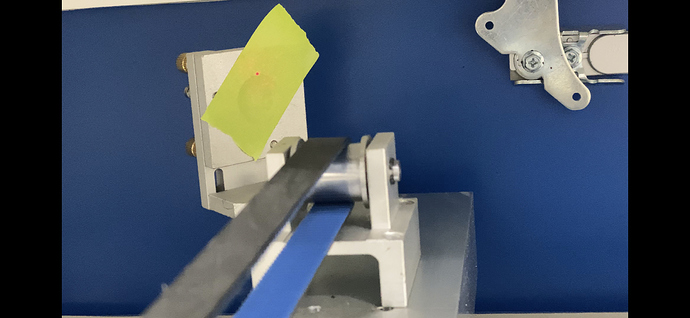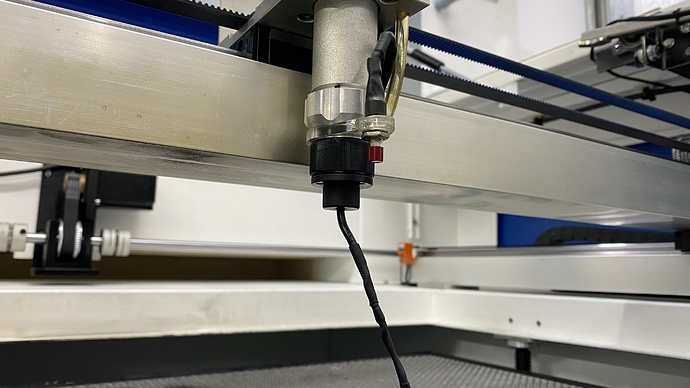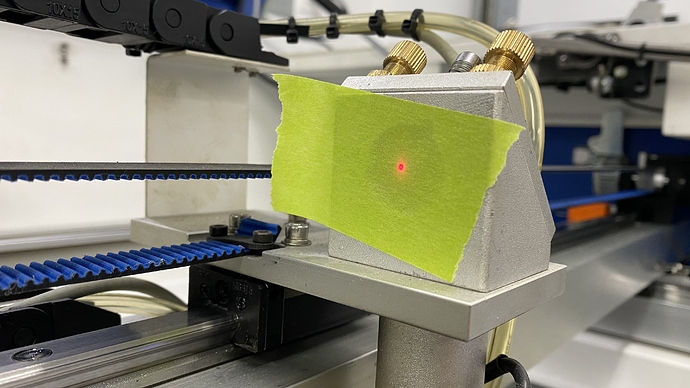Red laser up through the lens holder in a snug adapter is the most amazing way. Someone had mentioned it on the forum a few weeks ago.
I’m going to fog the room with a fog machine because as @Dave01 mentions, PARALLEL is so critical. And understand it is parallel in all directions.
Why parallel is so important is because when x or y is jogged and the distance between the corresponding mirrors changes, being out of parallel means the overall end point of the beam is moving (left, right, up, or down).
Try this: point a narrow beam flash light at a wall as straight as you can. Walk toward the wall. The height of where the light beam hits the wall should be the same.
Now go back and point the flash light at the wall at an angle to where the light is toward the top of the wall. Hold the light at that same angle consistently in your hand. Don’t move the flashlight. (Don’t think about where the flashlight is pointed, think about the angle of the instrument in your hand only). Now walk toward the wall…
What happens? Well the light becomes lower on the wall as you walk closer. Walk backward holding the angle and the light climbs the wall.
So why the fog machine? Well, I already made massive improvements realigning with the reverse red laser up through the lens holder.
I want to try a method of the same but with pointing mirror 2 directly at 3 until I get perfect, single beam observed through the fog.
Then turn mirror two to reflect to mirror one and align 1 until a single beam forms.

